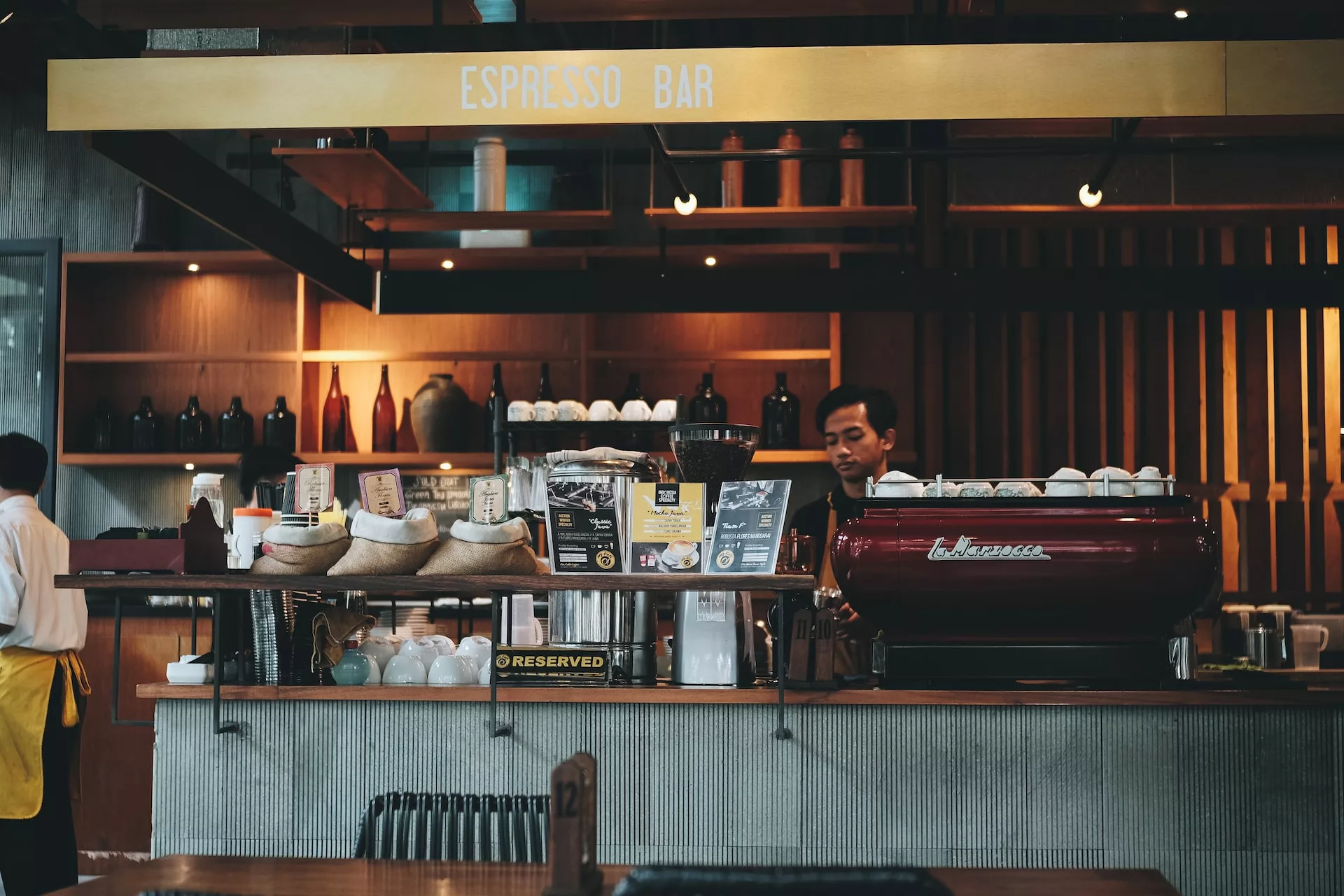A coffee shop is a lively and fast-paced environment, which means that things can sometimes get overwhelming. One way to streamline operations and ensure that your coffee shop runs smoothly is to implement employee checklists. Checklists can help your baristas keep track of tasks, stay organized, and provide a consistent level of service. They also help keep your coffeeshop profitable. Here’s a quick overview of how to use employee checklists in your coffee shop with examples you can use today.
How do I create checklists for my coffee shop?
In any service-based business, employee performance can make or break the customer experience. This is especially true in the coffee industry, where customers have high expectations for both the product and the service. So, how can you ensure that your employees are providing the best possible experience for your customers? One way is to use checklists.
A checklist is simply a list of tasks or items that need to be completed. When used correctly, checklists can help improve efficiency and accuracy while also reducing mistakes. Checklists can also help improve communication between employees and managers. In the coffee industry, checklists can be used for everything from pre-opening opening tasks to barista training to post-closing clean-up.
Types of Checklists
There are two main types of checklists: independent and dependent. Independent checklists are best suited for tasks that are completed regularly with little to no variation (e.g., making a cup of coffee). These types of checklists should be brief and straightforward so that they can be easily completed without error.
Dependent checklists, on the other hand, are best suited for tasks that are completed less regularly or that require more attention to detail (e.g., brewing a pot of coffee). These types of checklists should be more comprehensive so that all steps are accounted for and no details are overlooked. Depending on the task at hand, a dependent checklist may need to be completed by more than one person.
Creating the Checklist
The first step is to sit down and brainstorm everything that you want your employees to do during their shift. This may include tasks such as cleaning the espresso machine, restocking the pastries, or taking out the trash. Once you have a complete list of all the desired tasks, you can start creating your checklist.
There are a few different ways to format your checklist, but we recommend using a simple bullet point format so that it’s easy for employees to read and understand. Be sure to include specific instructions for each task so that there is no confusion about what needs to be done. For example, if you want your employees to clean the espresso machine, be sure to specify what cleaning products need to be used and how often the machine should be cleaned.
It’s also important to keep in mind who will be using the checklist—is it for employees or managers? If it’s for employees, make sure the checklist is easy to follow and understand; if it’s for managers, make sure it’s thorough enough to catch any errors or problems. In either case, make sure you ask for feedback on the checklist after it’s been in use for awhile so you can improve it as needed.
How do I implement checklists in my coffeeshop?
Once you’ve created your checklist, it’s time to start using it in your coffee shop. We recommend rolling out the checklist gradually so that your employees can get used to using it. Start by introducing the checklist on slow days or during shifts when there aren’t as many customers. This will give your employees time to get familiar with the checklist and allow them to ask any questions that they may have. As they become more comfortable with using the checklist, you can start implementing it during busier times as well.
Only any given day, a hundred tasks must be completed. Create checklists for employees (and yourself) to make sure that everything gets accomplished.
Here are a few things to remember on a daily basis:
Setting up for the day:
- Turn on the espresso machine (this takes time to heat up before it is ready)
- Bake or warm pastries (if necessary)
- Put pastries in display case
- Count down the register
- Start up the granita machines
- Stock the condiment bar: Fill creamer thermoses, refill sugars, stock napkins, straws, and stirrers
- Brew coffees
- Clean all surfaces. Use cleaner on glass surfaces, including door, display cases, and coolers (these are all fingerprint magnets)
- Prep food for breakfast and lunch (if necessary)
- Turn the window sign over from closed to open
Closing down:
- Wipe down the tables, chairs, and counters with sanitizer (this should be done throughout the day, with one last thorough cleaning at night)
- Clean and stock the bathrooms (this should be done throughout the day as needed)
- Mop floors
- Wash dishes
- Restock cups, lids, impulse items, supplies (bagged coffee, tea, etc.), and bottled beverages as needed
- Wrap up unused pastries. Check expiration dates and discard items past their expiration
- Prep food for the next morning, if necessary
- Clean the espresso and coffee grinders
- Backflush the espresso machine, wash the drip tray, and soak the portafilters overnight
- If you have a soda machine, remove the nozzles and soak overnight, wash the drip tray
- Clean the granita machines
- Take out the trash
- Count down the register, run all necessary reports and do closing paperwork
- Close out the waste sheet
Throughout the day:
- Clean, clean, clean!
- Check the espresso grind and calibrate as necessary
- Keep condiments stocked
It is essential that you spot clean as often as necessary throughout the day, and do a thorough cleaning after you close. The appearance of your shop will influence your customers’ perceptions of the quality of product you supply. You and your employees should be wiping down counters and tables every free moment you have.
JOURNAL KEEPING
Consider keeping a journal or planner to make notes in. Record the sales on a given day, what sold well and what didn’t sell, what was going on in the area, what the weather was like. Compiling this kind of data can help you identify trends in your business so you can better cater to your customers.
WEEKLY TASKS
On a weekly basis, you, your manager, or a designated person should be doing the following:
- Check expiration dates and discard food as necessary
- Order supplies
- Compare waste log to order history
- Complete the weekly summary sheet—sales forecast compared to actual sales. Note any unusual weather or events that occurred during the week. This will aid you in predicting trends.
It’s best that one person handle one or more of these tasks, and that these tasks occur on a scheduled basis. For instance, only the manager handles the ordering on Wednesday mornings, rather than whoever happens to be in the store at the time. This will reduce confusion about who has done what, and if any problems occur, you will only need to speak to one person rather than ask three or four different people who ordered the extra case of mint syrup.
MONTHLY TASKS
You can’t live by schedules; maybe there’s fresh rhubarb at the market so you make strawberry rhubarb muffins instead of blueberry. But the more you can keep organized, the easier this will be. Keeping rotation schedules will help you remember what was served last week and last month, to make decision making easier the next time around.
Other tasks to complete on a monthly basis include:
- Check the coffee rotation calendar and adjust as needed
- Clean the hard-to-get to areas, like the countertops behind equipment and under display racks, above windows and doors, light fixtures, and inside cabinets
- Complete month-end profit and loss statements and cash flow sheet
- Complete the month-end inventory count
- Employee schedules
If you only need to complete employee schedules once a month, you’re in a good position. However, this may need to be done more frequently because your staff can’t function with a monthly schedule. Try to keep schedules at least three weeks in advance. Your state laws may also dictate how far in advance the schedules need to be completed. Be sure you check up on this before hiring employees.
Checklists are a helpful tool for any service-based business, but they’re especially important in the coffee industry where customers expect both great coffee and great service. When creating checklists, keep clarity, brevity, simplicity, and specificity in mind. And don’t forget to ask for feedback so you can continuously improve your checklist over time!
More Coffee Shop Articles
Should I find a partner for my new Coffee Shop?
Launching a coffee shop can be an overwhelming task, especially if you have limited resources. Finding the right partner can be an invaluable asset to your business and help you reach your goals faster. In this post, we’ll discuss when it’s a good idea to find a partner for your coffee shop business.
Hit the Ground Running: How to Accelerate Your Coffee Shop Startup
Starting a new business is an exciting but daunting undertaking. If you want your coffee shop to take off and reach its full potential, it’s important to hit the ground running. In this post, we’ll explore how to accelerate your coffee shop startup by addressing key areas like planning, marketing, and operations.
What Professional Services Do I Need to Start My Coffee Shop?
Starting a coffee shop is a big undertaking, and it’s important to make sure you have the right professional services in place. In this post, we’ll explore what services you need to help make your dream of owning a coffee shop a reality.
5 Secrets to Local Marketing for My Coffee Shop
Local marketing is the key to success for any small business – especially a coffee shop. In this post, we uncover five tips and tricks that can help drive more customers through your door and boost your revenue.
Reducing Risk: Insurance Options for My Coffee Shop
Choosing the right insurance coverage for your coffee shop is an important part of reducing risk and protecting your business. Taking time to review available options and weigh the costs against potential risks can help ensure that you have the best coverage possible.
How Do I Get a Business License for My Coffee Shop?
Are you planning to open your own coffee shop? Make sure you know how to get a business license first! This post will explain step-by-step how to get the right license for your bustling cafe.
How Do I Find the Right Location for My Coffee Shop?
Opening a coffee shop is a big decision, and it all starts with finding the perfect location. In this post, we’ll take a look at what goes into choosing the ideal spot for your coffee shop business.
5 Mistakes Coffee Shop Entrepreneurs Make
Starting a coffee shop can be a daunting but rewarding task. But without the proper preparation, entrepreneurs can easily make mistakes that could prevent them from achieving success. This post covers five common pitfalls coffee shop owners should look out for to ensure they do not fall victim to them.
How to Find Funding to Start a Coffee Shop
Are you ready to become your own coffee shop owner? There are many ways to finance a new business, and this post will discuss how to find funding for your coffee shop dreams.










